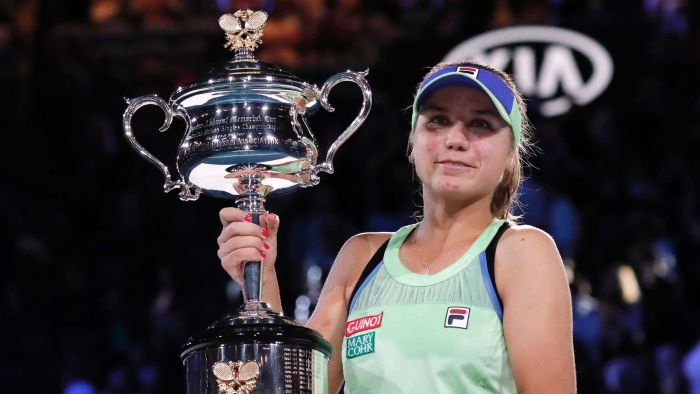In the fully vaccinated future, we will no doubt look back on the time of COVID-19 as a period of personal and communal sacrifice.
Lost jobs, shuttered businesses, cancelled weddings, unattended burials, sombre masked strolls and, worst of all, a tragic mortality rate.
We will recall that community sport was cancelled or truncated, athletes were quarantined in hubs and major events played out before empty grandstands.
As the sacked coaches and auxiliary staff and sports-deprived fans in the worst-struck cities can attest, sacrifice has not been equally shared.
But in most cases there has been a sense we have all given up something to create that sense of “new normality” or to produce the conditions in which that would be possible.
And then there is the Australian Open, an event that will be remembered much differently if the conditions under which the tournament is reportedly set to proceed in a belated February timeslot are any guide.
Having gained the necessary quarantine concessions from the Victorian Government, Tennis Australia will not ask the world’s best tennis players to make the kind of sacrifices other athletes have endured to keep their sport continuing.
Sure, players will have a 14-day quarantine including regular COVID tests, but they will also be allowed out for five hours a day to practice, exercise and eat on site.
This will mean no lavish shopping trips to Melbourne’s Chapel Street precinct, no nightclub activity and — mercifully — no obligatory photo-ops with marsupials or local AFL heroes.
But it will be life as close-to-normal for athletes who are here to play a tennis tournament, rather than pick up a bargain in a COVID fire sale, engage in the local nightlife or hug a koala.




Yet these relatively generous conditions alone are apparently not seen as enticing enough to attract about 500 superstars and journeymen to the scene of the $71 million prize pool, and a guaranteed $100,000 singles first-round prize.
Tennis Australia has to be careful how it spends its cash
Emblematic of a sport in which the top players hold a disproportionate amount of power, the Australian Open will go into debt to pay for chartered flights, hotel quarantine and meals for even those players who could afford to buy the five-star hotels they will occupy.
In some ways this is not unlike the quarantine arrangements for competitions such as the AFL, which spent millions housing and feeding players and their families after they were isolated in various hubs outside stricken Victoria.
The stark difference is that footballers were also asked to take pay cuts and were part of teams who also suffered significant revenue losses, not individual contractors who are generally expected to cover their own flights and accommodation.
(Yes, there could be some redistribution of the prize money including the $4.12 million winners cheques to ensure early-round losers get more. But, as sacrifices go, this will be a bit like giving up the lobster and only having the fillet steak.)
No doubt the enormous costs that will see Tennis Australia eat into its own revenue just to get the tournament started will be justified by the retention of media rights revenue, sponsorship and the at least partial revival of ticket sales assuming crowd sizes increase.
However, as we have observed here previously, that Tennis Australia must bend over backwards to ensure it gets a full-strength field for a tennis major is a sad reminder of how hard it has had to work to win, and buy, the affection of the players.




Yet it seems decades of pandering and even grovelling to players at the Australian Open, and the hundreds of millions of dollars invested in Melbourne Park by the Victorian Government, have not created sufficient goodwill to guarantee players will pay their own way to the COVID-era edition.
The players might argue they have suffered their own major losses during 2020. But, surely, the prospect of a $100,000 pay cheque for at least the 256 players in the men’s and women’s singles draws should be sufficient to have them foot at least part of the quarantine bill.
Of some concern for Australian tennis should be what impact going into debt to stage the Australian Open will have on tennis’s grassroots.
Like the impact of COVID-19 on the employment rate once JobSeeker payments are removed, the lost revenue and costs of keeping elite sport running are likely to have a profound effect on community competitions over the next few years.
Again, Tennis Australia might argue the very presence of the Australian Open is its greatest asset in driving participation and gaining sponsorship and media rights revenue required to fund community programs.
But if paying for Roger Federer’s room service or Serena Williams’s suite means local coaches or development officers lose funding or a country court can’t be resurfaced, the sport will lose the fifth-set tie-break.
Kelli Underwood and the Offsiders panel will analyse all the latest sports news on Sunday at 10:00 am on ABC TV.







